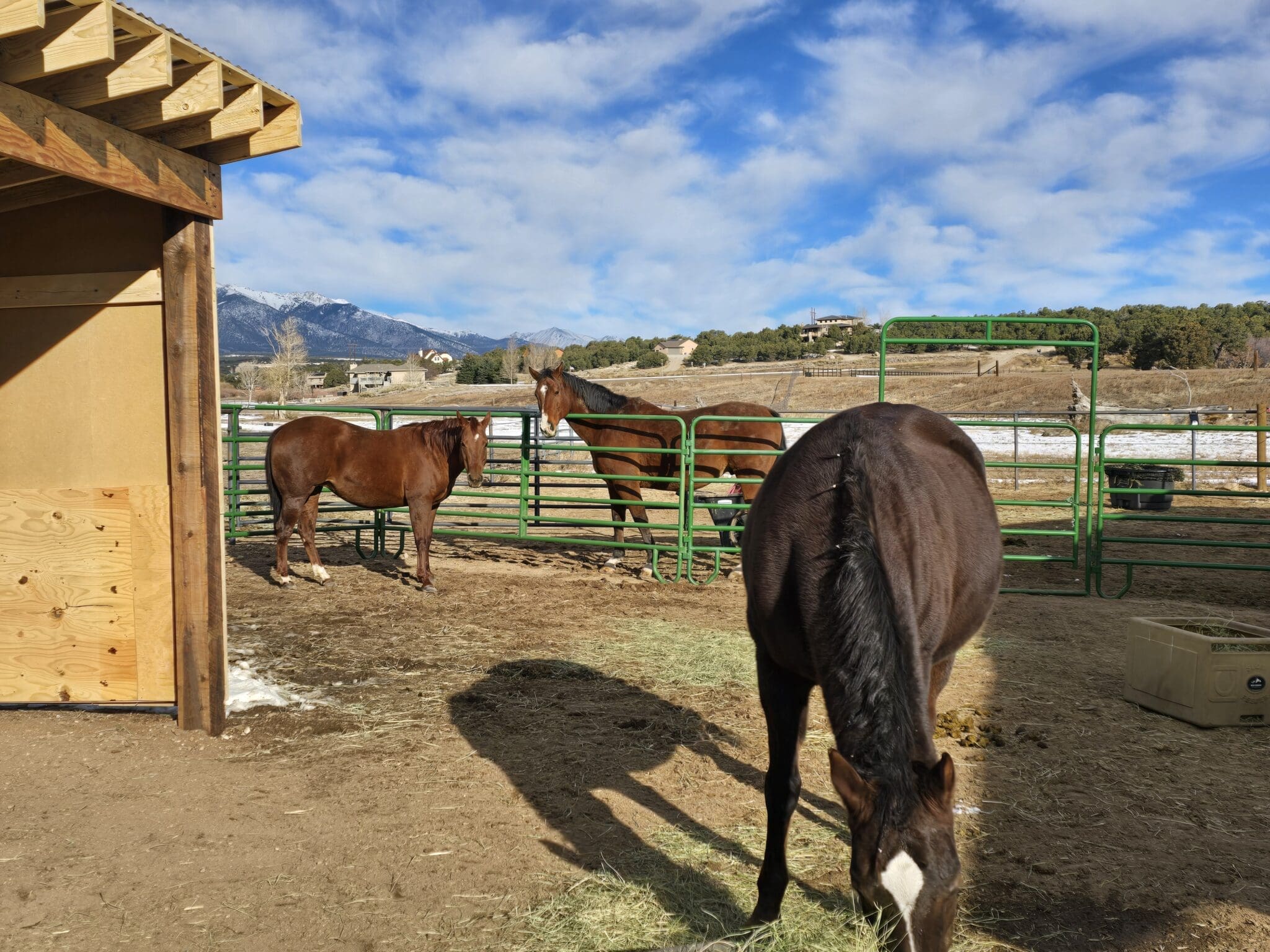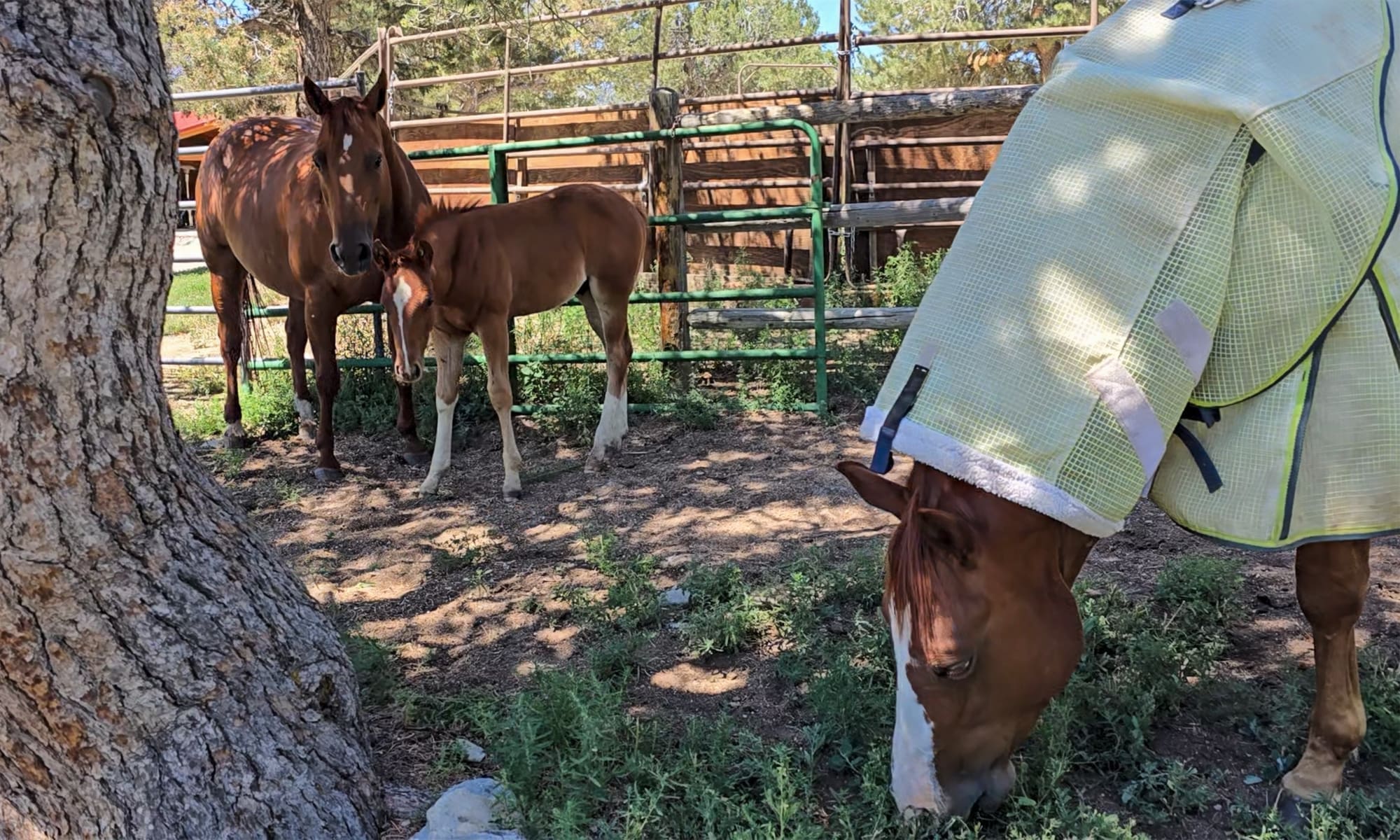Question Category: Riding Skills
Question: How can I remember how to use natural aids properly? Do you have images you use to help students remember the correct positions, etc.?
Answer: From the very first time you mount a rider on a horse, she needs to know how to use her primary natural aids, the seat, legs and hands, to communicate to the horse what she wants him to do.
I think we do riders a huge disservice by teaching them in the beginning to pull to whoa and kick to go, when there is really much more to using the aids than that. If riders learn from the beginning to use their primary aids together as a unit, use all the aids all the time, then they will develop proper skills and reach a higher level of understanding, sooner rather than later.
I find that the more I can use mental images, word pictures and analogies, the easier it is for my students to learn. A good instructor will always have several ways to explain any one skill, since there is no telling what idea will make an impact on a given rider. I spend a lot of time trying to come up with new images to use in teaching and I always keep my ears alert to any new ideas that are useful. Here are a few of my favorite images that I have shared from time to time in this column:
* Pushing a swing- the motion for sitting the canter
* Bouncing your bottom on a trampoline- the motion of posting trot
* Pulling your cat-tail (from Sally Swift)- how to open your pelvis
* Sitting on your pockets- using your seat to stop
* Two-pronged electrical plug- is your seat bones and your horse is the electrical outlet you plug them into to stop
* Fred Flintstone stop- putting your weight in your heels when you ask the horse to stop
* Turning a key in a door- the motion of the indirect rein in front of the withers
* Windshield wiper legs- how you use your lower leg and heel to apply pressure to the horse’s sides
The analogies and images are endless and I hope that a few of you will be willing to share your ideas too. One of my all time favorite images to use has to do with learning to connect and coordinate your primary natural aids to control the horse and channel his movement is a given direction. It goes like this….
As you sit on your horse, close your eyes and imagine that you horse is a long narrow hallway, from which there are six exits. There is a door at each end and two doors on each side. The doors represent all the directions that your horse can move. He can move forward out the front door or backward out the rear door. In addition, he can move forward and to the side, moving through his shoulder, to the left or to the right. He can also move backward and sideways right or left, moving through his hip.
Using you seat, legs and hands to control and guide the horse is simply a matter of opening and closing doors to direct the horse in a given direction. For instance, if I want my horse to move straight forward, I will open the front door by reaching forward with my weight and both hands, and close all the other doors by closing both legs on my horse’s sides; the horse moves forward out the front door. If I want my horse to back, I will close the front door with my hands by picking up and back on both reins, close the side doors by closing both legs on his sides and open the rear door by shifting my weight back; the horse moves straight back.
Moving laterally (to the side) is a little more complicated than going forward and back, but by thinking through the opening and closing of doors, it is a little less complicated. If I want my horse to move sideways in a side-pass to the right, I need to close the doors on the left, close the door in front and open the doors to the right. So, I will bring my left rein against the horse’s neck (neck rein or indirect rein in front of the withers), close my left leg against his side right in the middle of his ribcage and press down with my left seat bone. In the meantime, my right hand will open to the side (leading rein), my right leg will come slightly off of the horse and my right seat bone will be lightened (since when you make one seat bone heavy, the other one lightens).
If my horse does not move straight sideways, I may need to adjust some doors. For instance, if he moves sideways through his shoulder but leaves his hip behind, I can adjust my right leg forward to close that door and block the flow through the shoulder and move my left leg back toward the hip to close the left-hip door and encourage movement out the right-hip door. At the same time I can move my left hand up and back toward my opposite shoulder (indirect rein behind the withers) to move his hip right and bring my right hand forward to slightly close the right-shoulder door and slow down the movement through his shoulder. Your aids will constantly adjust to open and close doors, depending on where you need the horse to move.
A more advanced and illusive image, but one that has helped me tremendously in my riding, is the concept of “riding your horse through the tunnel.” I learned this concept well over twenty years ago, so it’s source is long since forgotten. The concept of riding your horse through the tunnel means that your horse is moving through a tunnel created by your seat, legs and hands. To change the direction of your horse, you must change the shape of the tunnel. I like to imagine that I have headlights on the front of my hips and that I am shining the headlights down the tunnel. If the horse is to turn, I have to shine my headlights in the direction of the turn to reshape the tunnel.
Every image will not help every rider, but try them on for size and you may find one or two that fits you well, both as a rider and as an instructor. Riding with your right brain—the more creative side of your brain—will really help to bring your riding together and help you develop feel for the horse.
A good instructor will constantly be searching for and trying out new ideas for teaching and improving her own personal equitation skills. Sitting on a horse and thinking of exactly what something feels like or what exact procedure you use to gain a certain affect from the horse will help you reach your students more effectively.
My challenge to all CHA instructors is to explore your own techniques, put them into words and think of some creative images to use in teaching that particular skill. I hope that you will share your favorite ideas with us so that we can print them in The Instructor and help to fulfill our mission of promoting safe and effective horsemanship.
If you are interested in this topic, you might like to purchase this Goodnight educational product: “Principles of Riding Part 2”
Copyright ©Julie Goodnight 2000. All Rights Reserved. No part of this website may be reproduced without owner’s express consent.



